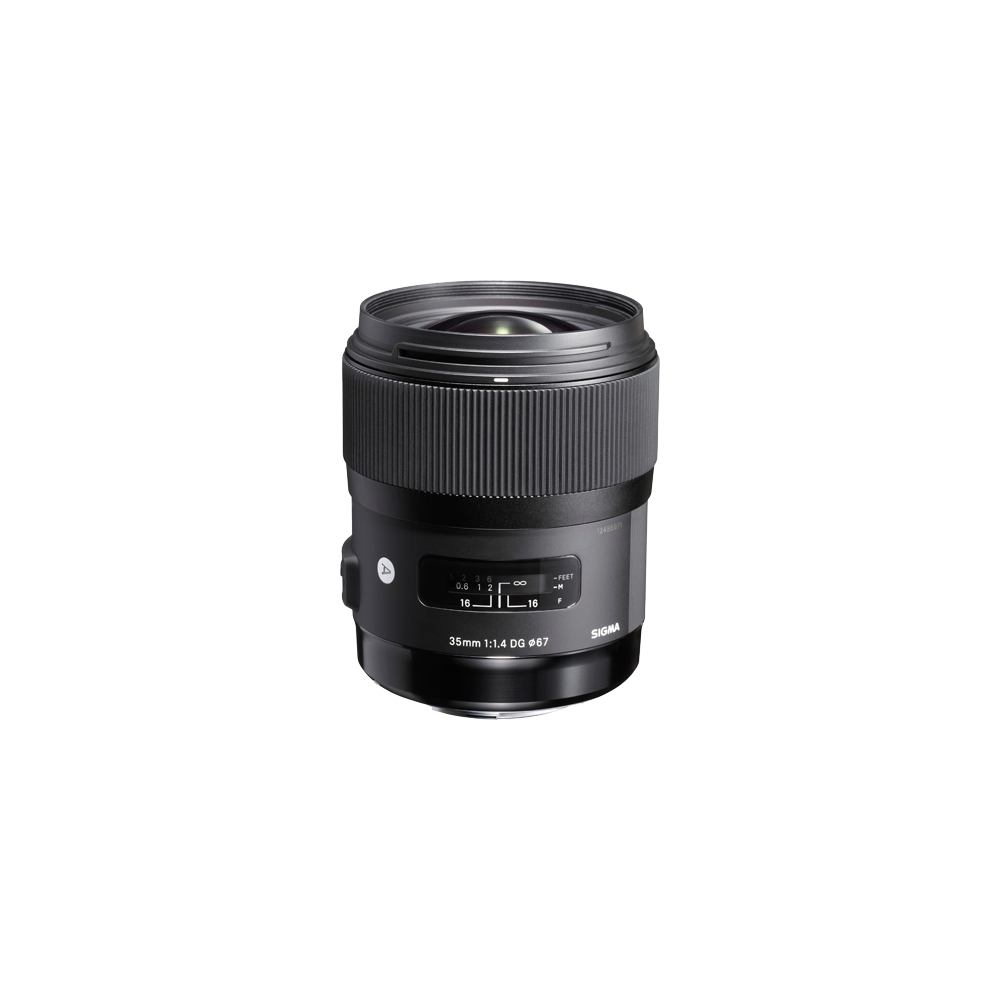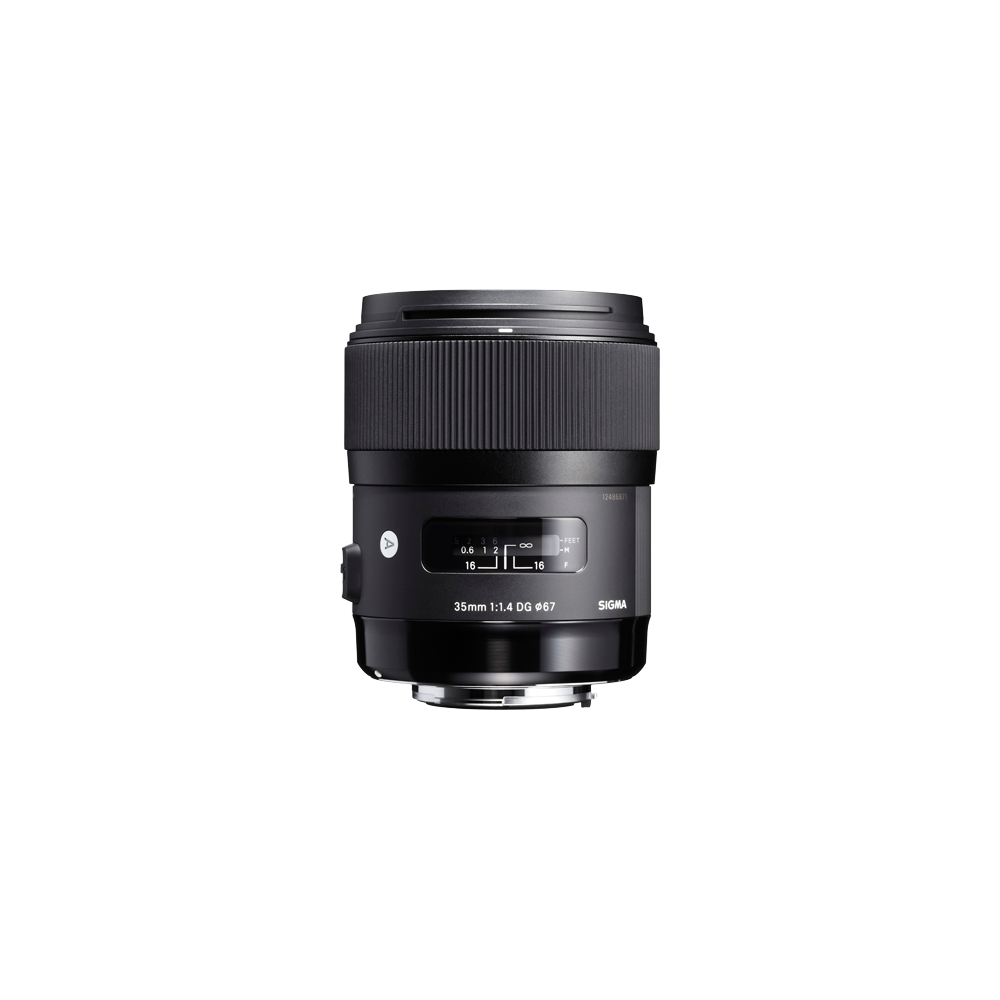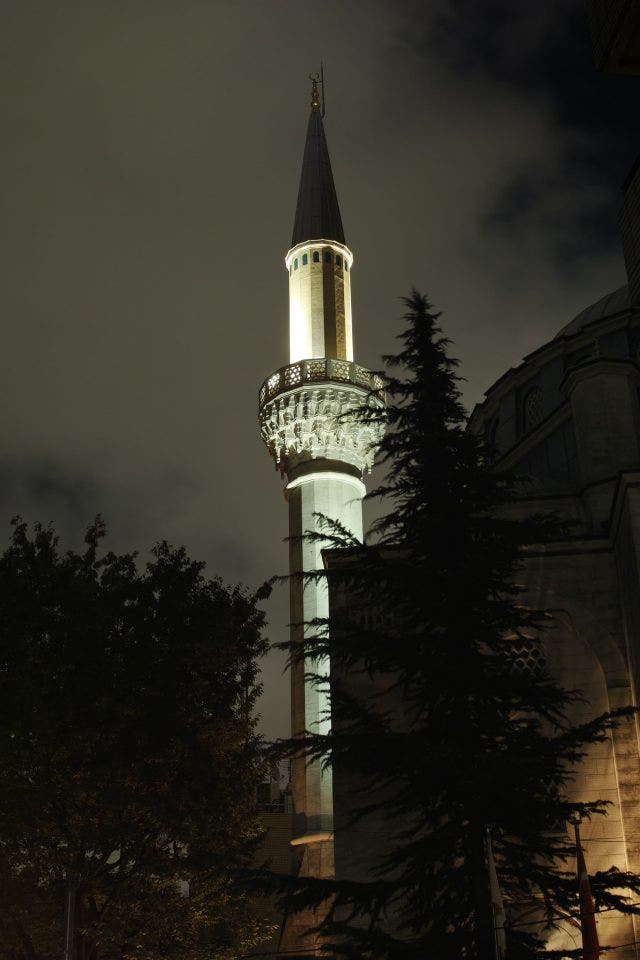35mm F1.4
DG HSM
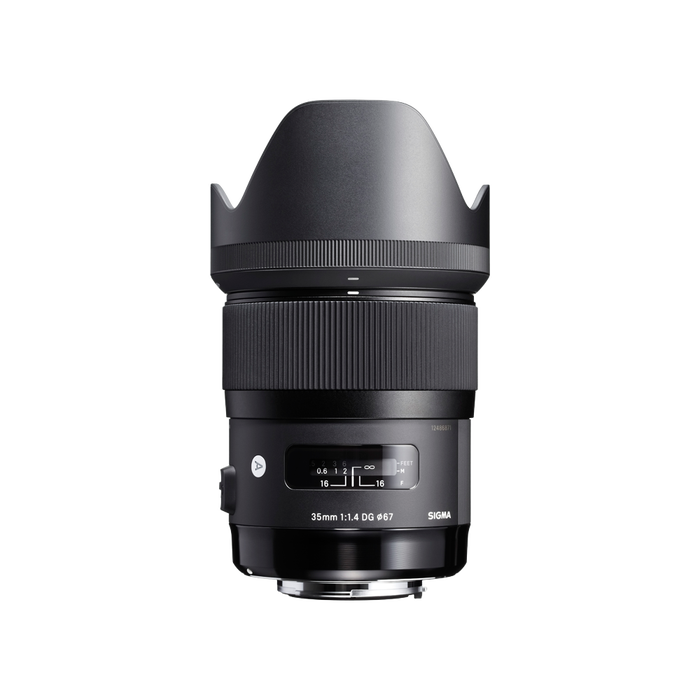

- Groundbreaking resolution and image quality
- Shallow depth of field
- Superior low-light and handheld performance
- Minimized optical aberrations
- Minimized distortion and vignetting
- Hyper Sonic Motor (HSM) for silent, fast autofocus
- Super Multi-Layer Coating reduces flare and ghosting
- Exclusive low-dispersion glass
- Rounded 9-blade diaphragm
- Made in Japan
AWARDS
|
TIPA AWARD |
2013 |
|
DP REVIEW GOLD AWARD |
2012 |
|
Camera GP Japan |
2013 |
| Angle of view | Standard |
|---|---|
| Camera Type | DSLR |
| Lens Mount | Canon EF-mount, Nikon F, Pentax K, Sigma SA |
| Sensor Size | Full Frame |
| Construction | 13 Elements in 11 Groups |
| Angle of view | 63.4º |
| Number of diaphragm blades | 9 (rounded diaphragm) |
| Minimum aperture | F16 |
| Minimum focusing distance | 30 cm |
| Maximum magnification ratio | 1:5.2 |
| Filter diameter | 67mm |
| Dimensions (diameter x length) | Sigma SA-mount ⌀ 77 mm x 94 mm |
| Weight (g) | Sigma SA-mount 665 g |
| Edition number | A012 |
| Supplied Accessories | Lens Hood LH730-03, Front Cap LCF-67mm III, Rear Cap LCR II, Case LS-340K (EO, NA, SA), Case LS-210L (SE, TL) |
| Accessories | USB-dock UD-01, WR Ceramic Protector Filter 67mm, WR Protector Filter 67mm, WR C-PL FIlter 67mm, Mount Converter MC-11, Mount Converter MC-21 |
| EAN-code | L-Mount 085126340698 |
| Specifications Info | L-Mount, Sony A-mount and Sony E-mount has been discontinued in production. * PENTAX SFX and SF7 not compatible. **** This product is developed, manufactured and sold based on the specifications of E-mount which was disclosed by Sony Corporation under the license agreement with Sony Corporation. |
A masterpiece large-aperture wide-angle F1.4 lens
A large-aperture lens with minimal axial chromatic aberration and superb peripheral resolution.
Several types of optical aberration can affect the image quality of a lens. Chromatic aberration is among the most important, and minimizing it is essential. There are two types of chromatic aberration: transverse, which can be corrected for with digital processing; and axial, which is difficult to minimize after a shot is taken. In the 35mm F1.4 DG HSM, FLD (“F” Low Dispersion) glass, which is equivalent to fluorite in its characteristics, and SLD (Special Low Dispersion) glass help optimize the power distribution of the lens. This optimization minimizes axial chromatic aberration by causing the different wavelengths of light to strike the same focus position while also minimizing transverse chromatic aberration. In addition, aspheric lenses help minimize astigmatism and field curvature. Thanks to these features, resolution is extremely high from the center to the edges of the photograph.
Lens construction
Putting a large-aperture aspheric lens first in the series of lenses makes possible a slim barrel. A single FLD glass lens, which boasts the same performance as a fluorite lens, is combined with four SLD glass lenses to minimize chromatic aberration. And optimized power distribution helps correct various types of optical aberration. These features give this F1.4 large-aperture lens truly optimal image quality.


Exclusive low-dispersion glass
The degree to which light is refracted by glass depends on the light’s wavelength. This fact causes different colors of light to focus at slightly different points. The result is chromatic aberration, the color fringing that is particularly noticeable in telephoto lenses. Most chromatic aberration can be removed by combining a high-refractivity convex lens element with a low-refractivity concave element. Yet residual chromatic aberration known as “secondary spectrum” may still remain. To minimize this secondary spectrum, which can be a serious issue with conventional lenses, Sigma lenses feature up to three types of exclusive low-dispersion glass offering superior performance: ELD (Extraordinary Low Dispersion), SLD (Special Low Dispersion) and FLD (“F” Low Dispersion). In particular, FLD glass offers ultra-low dispersion in combination with high transmittance and the anomalous dispersion characteristics of fluorite. Meticulous deployment of these types of exclusive low-dispersion glass and optimization of power distribution gives Sigma lenses superlative image rendition undiminished by residual chromatic aberration.
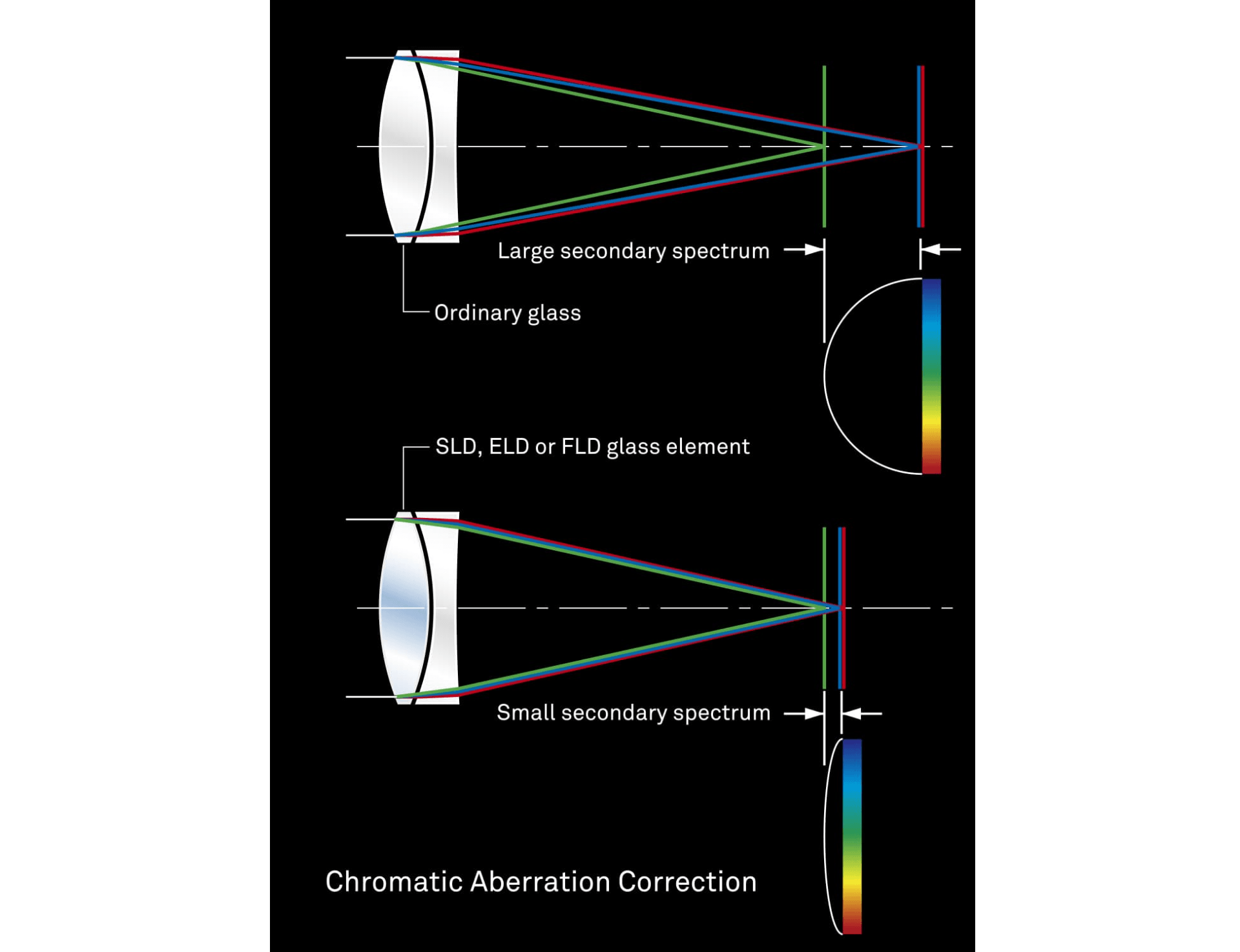

High resolution with beautiful bokeh effects
Minimal distortion combined with beautiful bokeh effects at large-aperture settings.
The aspheric lens at the front of the lens series helps minimize both distortion and vignetting. The rounded diaphragm produces an attractive round bokeh effect at large-aperture settings. Optimized power distribution minimizes sagittal coma flare. Coma of point light sources near the edge of the image and axial chromatic aberration are both minimized, making the lens an excellent choice for photographing nighttime landscapes and heavenly bodies.


Rounded diaphragm
When photographing with point light sources such as electric lights or reflections on a body of water in the background, the rounded 9-blade diaphragm helps produce an attractive bokeh effect—even at large-aperture settings.
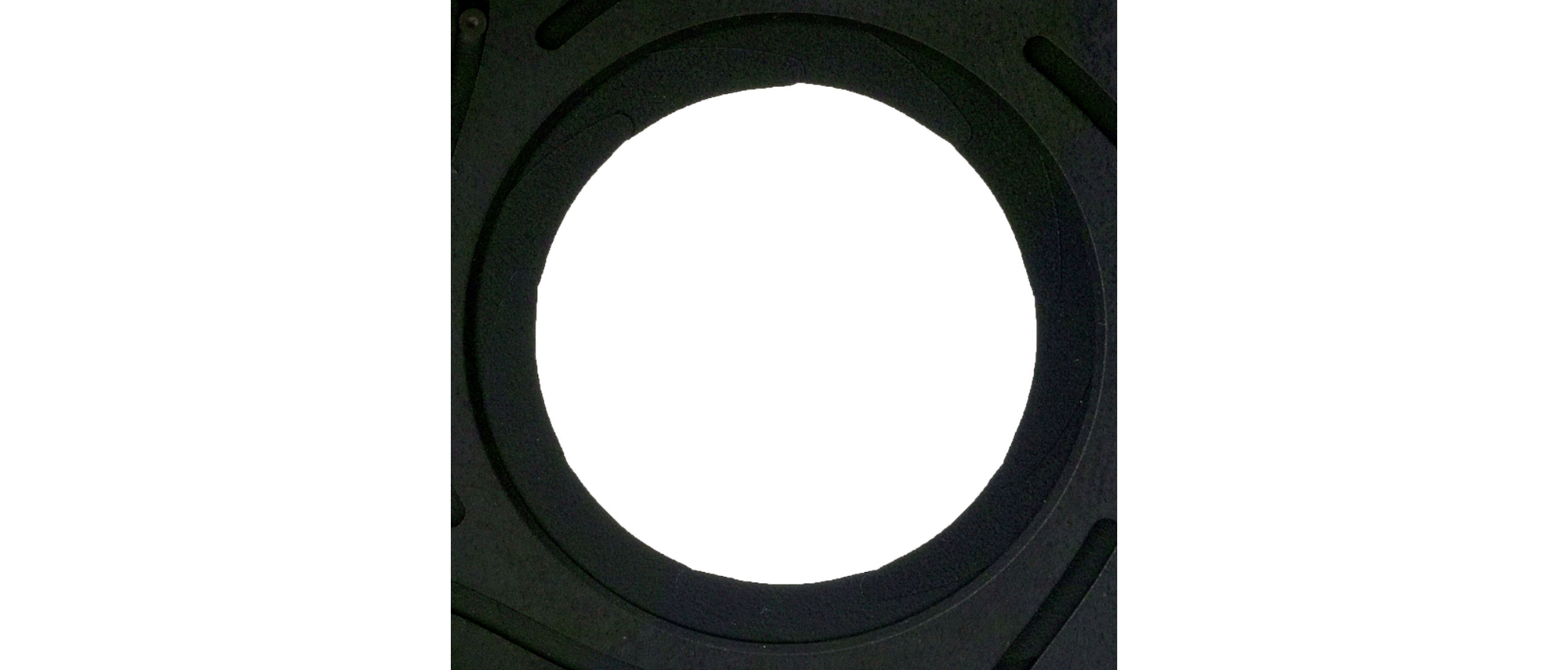

The finest in materials, usability and functionality.
A refined, integrated design made with the photographer in mind.
All lenses in Sigma’s new Art line come with a hood with a high-quality rubberized connector and feature a newly designed lens cap and AF/MF switch, and are designed for intuitive use and superior functionality. Inside, HSM (hypersonic motor) delivers high AF speed and extremely quiet performance. An enhanced algorithm offers even smoother automatic focusing. Full-time manual focus override is another key feature that leaves the artistic touches in the photographer’s hands. The brass mount combines high precision with rugged construction. Its treated surfaces and enhanced strength contribute to the exceptional durability of the lens. In both the external and internal parts, the optimized use of TSC(Thermally Stable Composite), an excellent match for metal parts, further contributes to the high-precision construction of the lens.


HSM (hypersonic motor)
HSM (hypersonic motor) delivers high AF speed and extremely quiet performance.
Floating system
This system adjusts the distance between lens groups during focusing, thereby reducing the amount of lens movement required. The result is less aberration at different shooting distances. Benefits are particularly great in macro lenses because they cover a wide range of shooting distances, and in wide-angle lenses, which employ asymmetric configurations of lens elements.
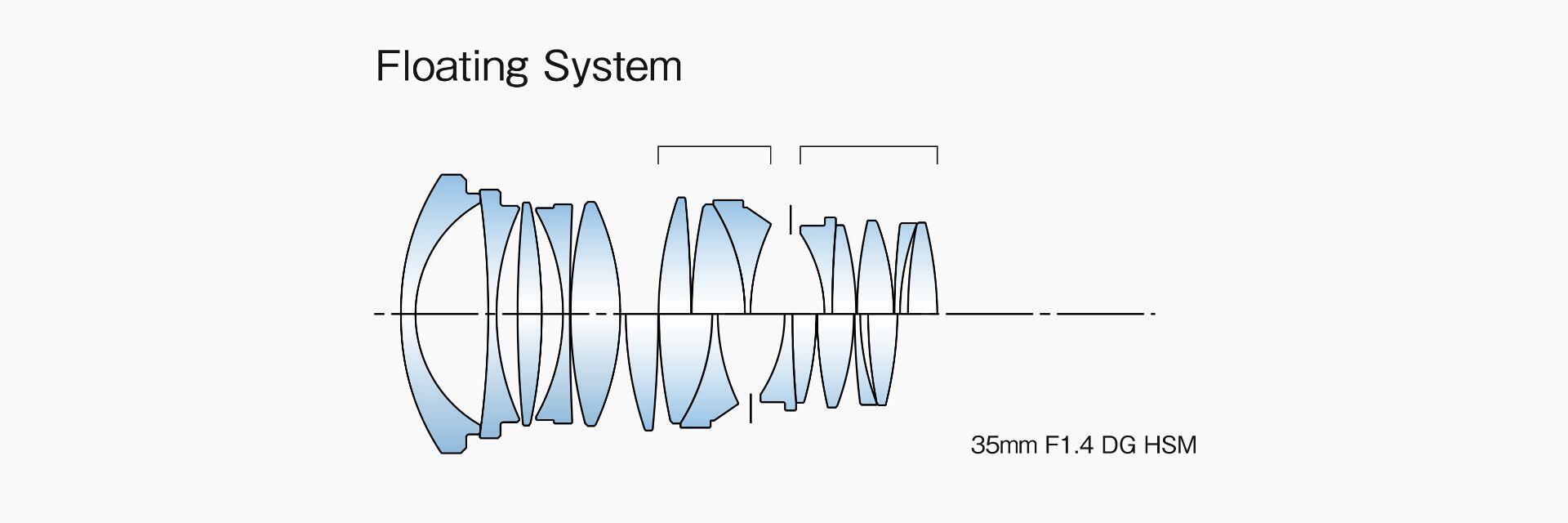

TSC (Thermally Stable Composite)
A first for the industry, the barrel of the lens features a new TSC (Thermally Stable Composite) that offers minimal thermal shrinkage combined with exceptional hardness. It also offers 25% greater elasticity than polycarbonate. Since its thermal shrinkage is low, TSC matches well with metal parts, further contributing to the high-precision construction of the lens. TSC also makes possible slimmer forms for parts like zoom rings and scaling rings.
Flare and ghosting reduction
From an early stage in the lens design process, flare and ghosting have been measured to establish an optical design resistant to strong incident light sources such as backlighting. Sigma’s Super Multi-Layer Coating reduces flare and ghosting to help photographers produce sharp and high contrast images even in backlit conditions. The included lens hood can be attached to block out extraneous light, which can have a negative effect on rendering performance.


High-precision, rugged brass bayonet mount
The brass mount combines high precision with rugged construction. Its treated surfaces and enhanced strength contribute to the exceptional durability of the lens.
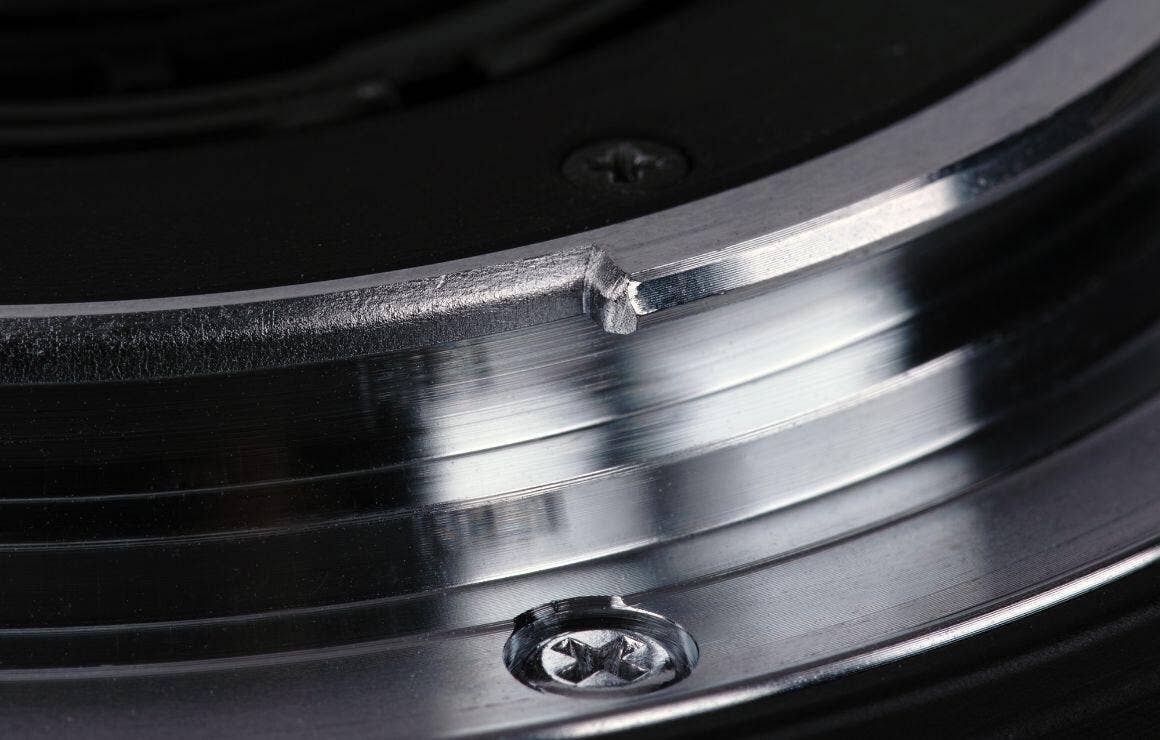

High-precision, rugged brass bayonet mount
The brass mount combines high precision with rugged construction. Its treated surfaces and enhanced strength contribute to the exceptional durability of the lens.
HSM (Hyper Sonic Motor)
The Hyper Sonic Motor (HSM) is an original SIGMA development that uses ultrasonic waves to drive the autofocus mechanism. Its extremely quiet operation helps avoid disturbing photographic subjects. High torque and speed assure rapid autofocus response. SIGMA uses two types of HSM: ring HSM and micro HSM. The Ring HSM configuration permits manual fine tuning of focus (manual override) by turning the focusing ring after autofocus is complete.
Rounded diaphragm
The polygonal shape of a conventional iris dia phragm causes out-of-focus light points to appear polygonal. A rounded diaphragm is designed to pro duce rounded out-of-focus light points when opened to near maximum aperture. This creates attractive bokeh effects in many situations, such as when pho tographing a subject against an out-of-focus surface of water from which light is being reflected.
Exclusive low-dispersion glass
The degree to which light is refracted by glass depends on the light's wavelength. This fact causes different colors of light to focus at slightly different points. The result is chromatic aberration, the color fringing that is particularly noticeable in telephoto lenses. Most chromatic aberration can be removed by combining a high-refractivity convex lens element with a low-refractivity concave element. Yet residual chromatic aberration known as "secondary spectrum" may still remain. To minimize this secondary spectrum, which can be a serious issue with conventional lenses, SIGMA lenses feature up to three types of exclusive low-dispersion glass offering superior performance: ELD (Extraordinary Low Dispersion), SLD (Special Low Dispersion) and FLD ("F" Low Dispersion). In particular, FLD glass offers ultra-low dispersion in combination with high transmittance and the anomalous dispersion characteristics of fluorite. Meticulous deployment of these types of exclusive low-dispersion glass and optimization of power distribution gives SIGMA lenses superlative image rendition undiminished by residual chromatic aberration.

